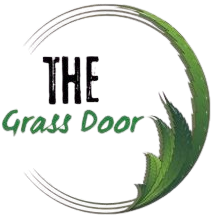Rosin is a solventless cannabis concentrate—it’s not made with solvents or synthetics. Depending on the intensity and strain used to remove marijuana compounds, rosin is viewed as a cleaner extricate. However, it’ll set you back: Rosin is normally more costly than concentrates made with solvents.
By definition, rosin is a cannabis concentrate made using intensity and pressure. Pot plant material is put in a press with warmed cushions and then compacted, crushing out hot oil. The cycle is solventless, so no solvents or synthetics are utilised in making rosin. This interaction was initially used to make rosin for violin bows, which is how the concentrate gets its name.
Rosin is prepared in minutes and requires no additional steps to filter or weaken the extracted oil. Making it is straightforward, and anybody can make rosin at home with a DIY (Do-It-Yourself) rosin press or a couple of domestic instruments.
Rosin is considered a dab, which is most normally consumed in a spot rig. Be that as it may, it can be placed in a cartridge and vaped. Rosin isn’t viewed as a wax, as waxes are made with solvents like butane.
What is Rosin made from?
Rosin can be made from different kinds of marijuana, including:
- Flowers
- Hash
- Trim
- Kief
The higher the nature of the info material, the higher the nature of the rosin. Individuals who consume rosin normally search for flavor in their spots and will frequently utilize bloom or nugs to squeeze it, which is the greatest beginning material.
Rosin can likewise be produced using trim, kief, or hash, and is perfect to make in the event that you have an overflow of any of those. Squeezing trim, kief, or hash into rosin will refine them, albeit the eventual outcome will not be as high of a quality as beginning with bloom or nugs.
Is Rosin full-spectrum?
Numerous cannabis extractions are additionally refined to eliminate different mixtures, however rosin is a full-range separate, containing the cannabinoid and terpene profile of the first plant.
Different types of Rosin
Various kinds of rosin include:
- Flower rosin utilises dried nugs, mids, shake or trim; most normal source material for rosin, and more tasty than hash rosin
- Live rosin utilises frozen weed plants; more delightful than different rosins as utilising frozen plants jam terpenes and flavours.
- Hash rosin utilises bubble hash or dry filter hash; it is generally cruller than bloom rosin, as hash is cruller and can be more strong, depending on the hash utilised.
Does Rosin make you high?
Rosin is generally less powerful than pot concentrates made using solvents, for example, break; however, it relies upon the beginning material used. Rosin is normally more tasty than dissolvable concentrates because the most common way of making rosin jelly is terpenes. Compared with flowers, Rosin is more potent than blooms.
Potential uses of Rosin
Creating rosin can be an extraordinary method for refining and decontaminating second-rate weed like trim or poor-quality hash. It’s likewise perfect if you have a great deal of weed, for example, assuming you’re becoming your own.
Rosin is touched like different concentrates in a spot rig, e-apparatus, or spot pen, commonly finished at a low temperature. Rosin doesn’t require as much intensity as different spots, and low temperatures will protect its terpene profile and flavour.
Likewise, Certain individuals dry out rosin and sprinkle it onto a bowl or joint for an additional kick.
Rosin vs. Resin: Know the Basic Differences
Many befuddle “rosin” and “sap” because the two terms sound so comparative. Rosin is, generally, the sticky substance emitted by trichomes on pot plants. If you smoke sufficient bloom in a line or bong, gum will develop.
Resin can likewise be a concentrate extricated from weed through a dissolvable extraction technique, including synthetic substances like butane, propane, and others, in a shut circle extraction framework.
As we’ve mentioned above, rosin is solventless—it is removed through intensity and tension, with no synthetic compounds. Both resin and rosin are produced using dried marijuana material.
These concentrates can be convoluted further with the expressions “live sap” and “live rosin”—the “live” basically implies that frozen pot plants were used to deliver them rather than dried flowers.
The cycle for making rosins is regularly more serious and absurd, so rosins are often more costly than tars. Since rosins are solventless, they are believed to be cleaner because they don’t utilize synthetics.
As rosins require solvents and a closed-circle framework, they ought to be made by authorized experts in an ensured lab and purchased in a legitimate market.
Choose the right Rosin for You
Rosin ought to be bright yellow to dim yellow. The lighter the rosin, the higher the quality. When newly squeezed, it will be hot and drippy like oil. When it cools, it will be delicate and smooth or honey-like and pliant.
A new, great source material will mean excellent rosin. Squeezing at low temperatures—beneath 250°F—will watch out for terpenes and save the flavor.
Live Resin Explained: Benefits, Uses, & FAQs




